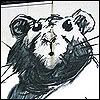|
|||
|








helping to keep the Urban Art Association totally FREE to use for all of its Members. Urban Art Association™ Founded by Daniel Silk in 2006.
- Urban Art
- United Kingdom
- United Kingdom Street Art, Urban Artists, Contemporary Artwork
- Adam Neate Art, New Print Release, Artwork For Sale,
- Antony Micallef Art, New Print Release, Artwork For Sale,
- Damien Hirst Art, New Print Release, Artwork For Sale,
- David Shrigley Art, New Print Release, Artwork For Sale,
- DFace Art, New Print Release, Artwork For Sale,
- Eelus Art, New Print Release, Artwork For Sale,
- Eine Art, New Print Release, Artwork For Sale,
- Harland Miller Art, New Print Release, Artwork For Sale,
- Hush Art, New Print Release, Artwork For Sale,
- Mau Mau Art, New Print Release, Artwork For Sale,
- Miss Bugs Art, New Print Release, Artwork For Sale,
- Nick Walker Art, New Print Release, Artwork For Sale,
- Paul Insect Art, New Print Release, Artwork For Sale,
- Pure Evil Art, New Print Release, Artwork For Sale,
- Sickboy Art, New Print Release, Artwork For Sale,
- Stik Art, New Print Release, Artwork For Sale,
- Banksy Art, New Print Release, Artwork For Sale,
- Banksy Prints, Posters, TShirts, Postcards, Art For Sale
- America
- America Street Art, Urban Artists, Contemporary Artwork
- Bast Art, New Print Release, Artwork For Sale,
- Cleon Peterson Art, New Print Release, Artwork For Sale,
- David Choe Art, New Print Release, Artwork For Sale,
- Jose Parla Art, New Print Release, Artwork For Sale,
- Josh Keyes Art, New Print Release, Artwork For Sale,
- Kaws Art, New Print Release, Artwork For Sale,
- Keith Haring Art, New Print Release, Artwork For Sale,
- Faile Art, New Print Release, Artwork For Sale,
- Retna Art, New Print Release, Artwork For Sale,
- Sandra Chevrier Art, New Print Release, Artwork For Sale,
- Shepard Fairey Art, New Print Release, Artwork For Sale,
- Europe + Africa
- Europe & Africa Street Art, Urban Artists, Contemporary Artwork
- Blek Le Rat Art, New Print Release, Artwork For Sale,
- Mr Brainwash Art, New Print Release, Artwork For Sale,
- Conor Harrington Art, New Print Release, Artwork For Sale,
- Dran Art, New Print Release, Artwork For Sale,
- Dolk Art, New Print Release, Artwork For Sale,
- Invader Art, New Print Release, Artwork For Sale,
- JR Art, New Print Release, Artwork For Sale,
- Kunstrasen Art, New Print Release, Artwork For Sale,
- Martin Whatson Art, New Print Release, Artwork For Sale,
- Parra Art, New Print Release, Artwork For Sale,
- Pejac Art, New Print Release, Artwork For Sale,
- Asia + Australia
- Other Subjects








Urban Art Association
MEMBERS • Please Post & Share Links to New PRINT RELEASES and Auctions below
etower80 • For sale Kenny Random "Let it Go" Giclee Print Snoopy Banksy Hand finished edition of 50. Print in hand Etower80@gmail.com
proffesser • Mr Brainwash in Nottingham on Wednesday 4th December 6-8pm.. a tad too early for me but might appeal to some more local clarendonfineart.com/collections/come-and-meet-mr-brainwash
rparducci • That's a good idea ,have you got any pictures of what exactly you meant? Was thinking of maybe ornate in red too? What are your thoughts
Daniel Silk • We are getting some very encouraging stats on the forum this week as I continue with the board and threads changes.
zatarro • Looking for artwork of ROA. If someone has art from this artist to sell, please let me know. Thx
Daniel Silk • The number or Boards and Threads continues to fall as we simplify the layout of the forum.
Daniel Silk • I hear a lot of Artists complaining about Instagram in the past year, how it used to be a good tool for Artists, but it's not good anymore, is that true?
anyaart • For Brett Kern fans, I noticed there is a spinosaurus for sale on E-Bay. It's a limited edition, one of only 60 made. This is the rarest of his dinosaurs. I am not the seller. I already have the same dino purchased in 2016. I've never seen one up for sale
Daniel Silk • Apology • Sorry I have been offline this past few weeks, due to a very bad Fever. I'm slowly getting better, step by step, and catching up with things here on the forum on the days I'm well enough. Thank you for your understanding.
Boy Wonder • I read that they were more or less nicked the same day they went up. Loads of fakes exist.
milou2 • Would love to see any photos of Banksy's first exhibition at the Severnshed in Bristol (2000). Who was there?
*
jirr • Hi all, over here in the states. Pandemic put me out of business, need to sell this asap. Please send offers thanks so much
1nkling • I can't help but think that a more reasonable tier for people who just want to support the work you guys do would raise more income. Then other tiers for those that want specialist benefits.
1nkling • As soon as I saw the heading for the email I thought 'Oh yeah, I use that place a lot. I'd happily support it'. Not at £40 a month though. I have a paid sub for a Formula 1 site I use that is very active. They have a high uptake on subs at £12 a year.
1nkling • Pricing on the new supporters sub seems a bit poorly thought out. £40 a month to have a pinned sale thread being the only listed benefit?


